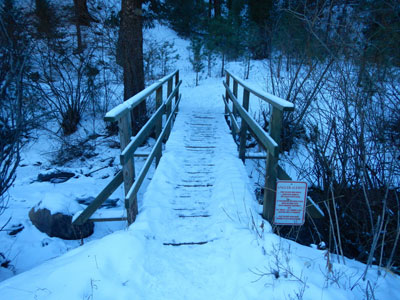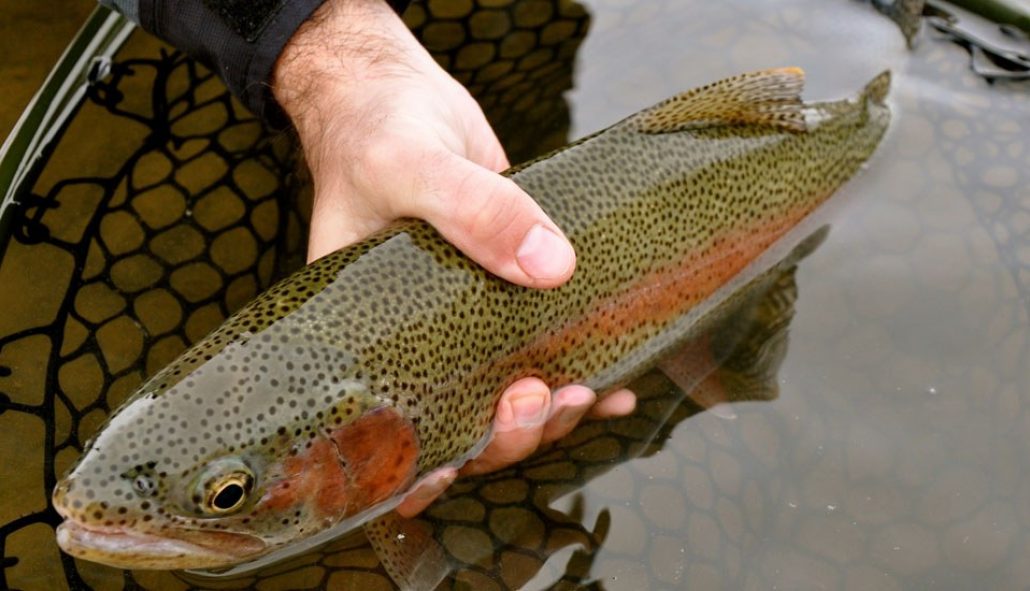 Winter, especially here in the great state of Colorado, can be one of the best times of year to catch that lunker you've been searching for. Over the next handful of posts, we'll break down fishing for trout in the Winter to help you maximize your successes on the water. In order to dive into this topic in the most logical way possible, we'll start from the top in today's post- What Happens To A Trout During Winter? Afterall, having a better understanding of what happens to a trout during winter will help in every aspect of fishing for them. From rigging, to fly selection, to presentation, to reading water, all of these factors need slight adjustments once the snow starts to fall and the days get shorter.
Winter, especially here in the great state of Colorado, can be one of the best times of year to catch that lunker you've been searching for. Over the next handful of posts, we'll break down fishing for trout in the Winter to help you maximize your successes on the water. In order to dive into this topic in the most logical way possible, we'll start from the top in today's post- What Happens To A Trout During Winter? Afterall, having a better understanding of what happens to a trout during winter will help in every aspect of fishing for them. From rigging, to fly selection, to presentation, to reading water, all of these factors need slight adjustments once the snow starts to fall and the days get shorter.
To start, it's important to note that a trout is a cold blooded animal. Therefore, as water temps drop to their coldest levels of the year, a trouts metabolism will follow suit. This does not mean though that a trout will stop feeding. Like I always say, trout have to eat for a living! Keep this in the back of your mind as you fish this Winter to help keep the confidence high!
One area of the feeding game though that definitely changes during the Winter is the size of the trouts 'feeding zone'. During the summer you'll often see trout being very active while feeding. They'll dart around, chase things downstream, sometimes even come completely out of the water. The best analogy I can use for a Winter trout is that you should pretend it's in a shoebox. If you put a trout in a shoe box, it's only going to have a few inches of clearance on either side. Your goal should be to get your flies within that 'shoebox zone' of a trouts face. Anything outside that range and I have very little confidence that trout is going to eat those flies. The key component with this (which we'll discuss in more detail in future posts) is that you'll often have to make many more drifts through a spot to cover it thoroughly.
Moving on, if you don't carry a thermometer, now is one of the best times to start doing so. I typically find that 40 degrees is the coldest water I'll get really good fishing out of. Much below that and the fish can really get sluggish. Keep an eye on the water temps throughout the day (which can increase a degree or two when the sun is at it's highest) and I think you'll start to notice an increase in your catch rates in relation to the warming water.
Another thing that happens to a trout during Winter is that it loses some of it's real estate. By that I'm referring to water levels, which are typically at their lowest of the year. This is an important consideration to keep in mind because lower water levels will concentrate fish in certain spots much more than during other times of the year, when flows are higher. Looking for these prime zones that will concentrate fish should always be a goal.
Lastly, during Winter trout have less food available to them. While this may sound like a bad thing, remember that they also don't need to eat as much either. The decrease of food works in perfect harmony with their decrease in appetite.
In simplest terms, a good blanket statement for Winter on the river is that "everything slows down". The water slows down (lower flows), the available food slows down (less hatches), and a trouts appetite slows down (slower metabolism).
Next week we'll move on to Part Two of this grand equation of catching Wintertime trout- Wintertime food sources and what flies you should be fishing!


 Winter, especially here in the great state of Colorado, can be one of the best times of year to catch that lunker you've been searching for. Over the next handful of posts, we'll break down fishing for trout in the Winter to help you maximize your successes on the water. In order to dive into this topic in the most logical way possible, we'll start from the top in today's post- What Happens To A Trout During Winter? Afterall, having a better understanding of what happens to a trout during winter will help in every aspect of fishing for them. From rigging, to fly selection, to presentation, to reading water, all of these factors need slight adjustments once the snow starts to fall and the days get shorter.
Winter, especially here in the great state of Colorado, can be one of the best times of year to catch that lunker you've been searching for. Over the next handful of posts, we'll break down fishing for trout in the Winter to help you maximize your successes on the water. In order to dive into this topic in the most logical way possible, we'll start from the top in today's post- What Happens To A Trout During Winter? Afterall, having a better understanding of what happens to a trout during winter will help in every aspect of fishing for them. From rigging, to fly selection, to presentation, to reading water, all of these factors need slight adjustments once the snow starts to fall and the days get shorter.